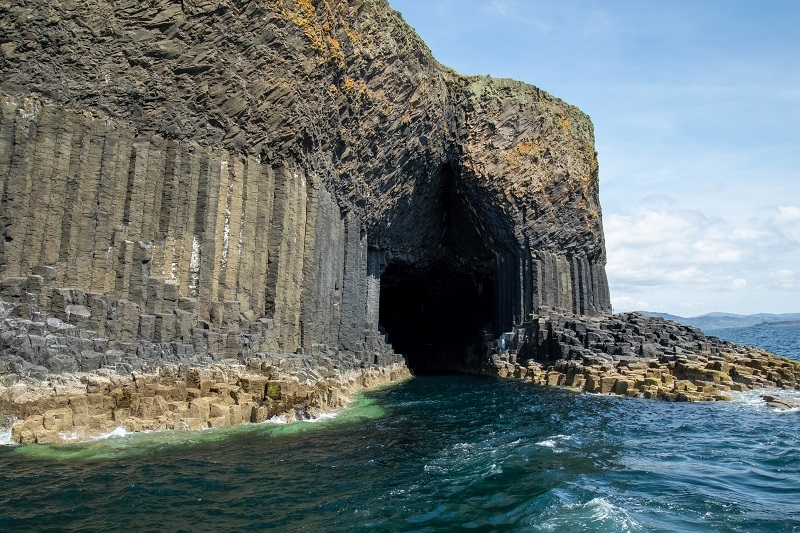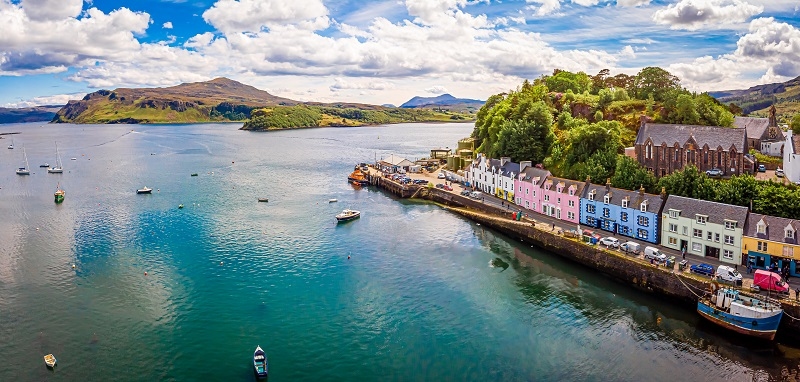
Scotland isn’t a place you just visit. It stays with you. The mist curling over lochs, the bite of sea air on the west coast, the way castles seem to grow out of the land—they all carve out a memory you don’t forget. And when people talk about the 7 scenic natural wonders of Scotland, they’re not exaggerating. These are landscapes that feel alive, that pull you in, that make you stop mid-walk and just breathe it in.
So if you’re dreaming of heading north, or maybe you’re already planning your trip, here are seven spots where Scotland shows off its best side.
The Isle of Skye Scotland looks like it was sketched by someone with a taste for the dramatic. Jagged peaks, rolling moors, cliffs dropping straight into the sea—it’s as if nature decided to have some fun. The Old Man of Storr is the postcard view, but honestly, just driving around Skye is enough to keep your jaw on the floor.
Then there are the Fairy Pools. Cold, clear, almost glowing in shades of blue and green. Brave souls dip their toes in; most of us just stare. Skye is one of those rare places where you can truly explore natural wonders and scenic beauty without ever getting bored.
If someone told you there was a beach in Scotland that looked like the Caribbean, you’d laugh. Until you stand on Luskentyre Beach. White sand, turquoise water, mountains in the distance—it’s surreal. The only giveaway that you’re in the Outer Hebrides is the occasional gust of chilly wind.
What makes it unforgettable isn’t just how it looks but how it feels. Empty. Wide open. A place where you can walk for miles and only hear your own footsteps and the sea.
Sir Walter Scott, the poet and novelist, apparently loved this spot so much that it got named after him. Scott’s View in the Borders isn’t dramatic in the way of Skye or Glencoe. It’s softer—rolling hills, the River Tweed winding below, fields stretching out like patchwork.
Stand there for a while and you get it. It’s quiet beauty. The kind that doesn’t shout for attention. You can see why Scott found his inspiration here. And honestly, you might feel a little of that spark yourself.
Drive into Glencoe and you can’t miss it—Buachaille Etive Mòr, the great herdsman. A mountain that looks like a perfect pyramid, standing guard at the valley entrance. It’s one of the most photographed sights in Scotland, and when you see it in person you’ll understand why.
On a sunny day, it’s striking. Under moody clouds, it’s haunting. Hikers love it, photographers adore it, but even if you just pass by in your car, it leaves an impression. Glencoe carries centuries of history, both beautiful and tragic, and this mountain feels like the keeper of those stories.
Now, castles don’t usually make “natural wonder” lists. But the setting of Stirling Castle Scotland earns a place here. Built on volcanic rock, it dominates the surrounding land. From the ramparts you can see where the Highlands meet the Lowlands, and it’s not hard to imagine the battles fought here.
It’s not just about the stone walls—it’s how the castle feels like part of the land itself. Nature and history blending together, telling one story. That mix is what makes Scotland unique.

Worth A Look: Must-Visit Scotland Historical Sites Near Airports
Tucked away in Ayrshire, Portencross Castle West Kilbride is smaller, less famous, but set against a coastline that steals the show. The castle itself is 14th-century stone, sturdy and weathered, looking out across the Firth of Clyde. On clear days you can spot Arran in the distance.
The coastline is rugged—rocks, waves, seabirds. Come at sunset and the light washes everything gold. It’s not touristy, which is half the charm. Just raw, windswept beauty with a slice of history thrown in.
And then there are the Scottish Highlands. Big, wild, endless. If you had to choose one place that captures Scotland’s spirit, this is it. Mist rolling across valleys, deer appearing on distant ridges, lochs reflecting skies that can’t decide between sunshine and storm.
It’s not just scenery. It’s a feeling. Standing by a loch with a flask of tea, watching the light shift over the hills—you start to understand why people fall in love with this country.
The Highlands tie this list of the 7 scenic natural wonders of Scotland together. Every castle, every mountain, every beach seems connected here.
Timing makes a big difference when exploring the 7 scenic natural wonders of Scotland. Summer (June to August) brings long daylight hours, lush green hills, and slightly warmer weather—ideal for hiking or visiting the beaches. Autumn adds fiery colors to places like Scott’s View, while spring offers quieter trails and blooming wildflowers.
Winter, though cold, gives dramatic moods in the Highlands, with snow-dusted peaks and fewer tourists. Each season has its charm, so the “best time” really depends on whether you prefer crowds and sunshine or solitude and wild, shifting skies.
Read More: Top Coastal Cliffs in Scotland Near Airports You Can Visit
Scotland is full of surprises. One day you’re on the sands of Luskentyre Beach, the next you’re gazing up at Buachaille Etive Mòr. You find poetry in Scott’s View, history in Stirling Castle Scotland, and sea-spray wildness at Portencross Castle West Kilbride. And then, of course, the Highlands—the heart of it all.
These 7 scenic natural wonders of Scotland aren’t just places to tick off a list. They’re experiences. They stay with you. They remind you that beauty doesn’t always come with fanfare—sometimes it’s just there, waiting for you to notice.
So if you’ve ever thought about seeing Scotland for yourself, here’s the nudge. Go. Wander. Let the land tell you its stories.
This content was created by AI